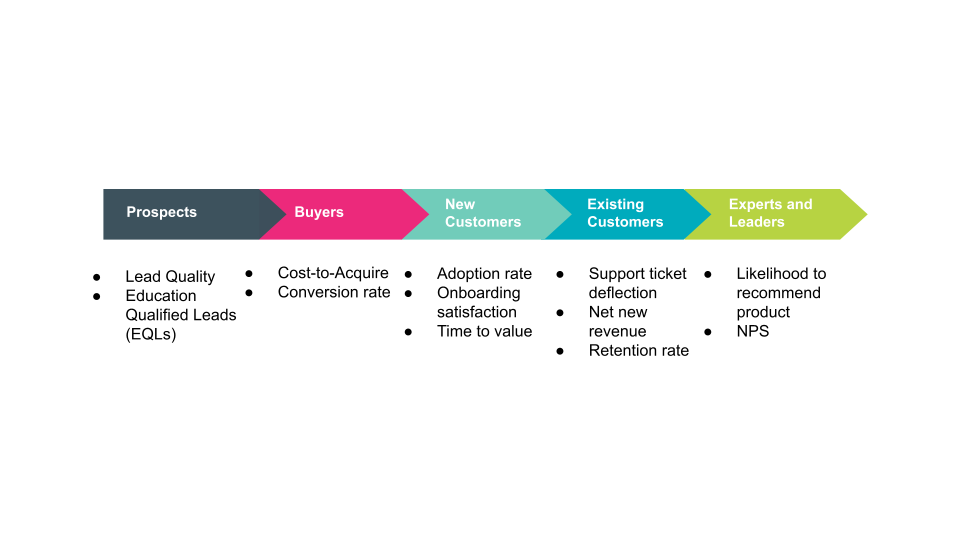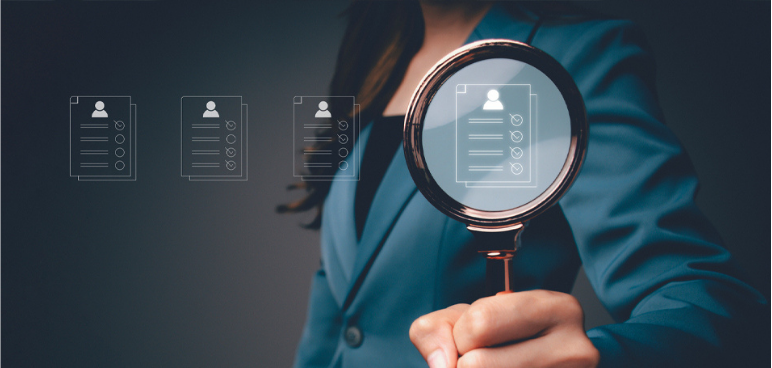How the customer journey can be impacted by thinking differently
We know – and so do you – that education is a huge driver of customer retention and product adoption. But, more often than not, running a customer education team becomes a frustrating cycle of aiming to impact the customer lifecycle through learning, but instead getting stuck in the day-to-day grind of clearing the content backlog, juggling inbound requests, and keeping up with administrative tasks.
In 2021, the Thought Industries research team conducted an initiative to learn from leaders of innovative customer education programs: What allowed them to produce exceptional results? How did they get there? And, how did they approach their journey differently? Asking these questions led us to build our maturity model for customer education. If you’re curious to get a sense of how your own program compares to industry leaders, try our self-assessment tool.
During our research process, we saw many barriers standing in the way of realizing the potential of customer education programs, spanning industries and company size – among them:
- Difficulty getting the level of support needed from busy subject matter experts.
- Difficulty demonstrating the business value of their program.
- Difficulty keeping offerings up to date.
- Difficulty sourcing, and analyzing, needed data.
But, when we looked into these exceptional customer education program leaders, we heard them share experiences of bursting through these same obstacles. And, even more notably, they realized measurable gains at every step of the customer lifecycle:
KPIs impacted by High-Performance Customer Education:

The leaders of these successful organizations, we found, tend to think differently about how to run a customer education program, and how to demonstrate clear impact on KPIs throughout the customer journey. This paradigm shift was what drove a unique ability to transcend this “stuck” feeling that so many can feel in the customer education space, and build thriving, highly mature learning organizations.
Ultimately, we’ve defined three key mindsets that highly successful learning leaders keep in their back pocket as they approach daily operations in customer education.
3 Mindsets to Uplift the Customer Journey with Education
- Visualize your program in three years
Where many newly-commissioned customer learning programs start with live (or virtual) training, then plan as they go, great leaders visualize the full journey to maturity, even from the first days forward. Plan to segment your learners into several groups once your library is built out next year? Keep those segments in mind when you implement a content management structure. Aim to connect education metrics with customer retention and satisfaction? Pick a learning technology that makes measurement and reporting simple. Your ultimate goals for your customer education program – even if you’re thinking years into the future – should help shape the decisions you make in the near term. While using customer education to boost demand generation may not be on your radar in the next few months, making decisions around content access and relevance to a prospect audience now (rather than later) will make this an easier transition when your team is ready.
2. Make your offerings do double (or triple) duty
For successful learning leaders, launching an educational experience is a core organizational capacity that goes beyond building exceptional training. Once a learning program has been stood up, innovative teams will find ways to reuse and repurpose content, courses, and workshops to do double (or triple) duty. We’ve seen leaders take education programs and use critical pieces of the curriculum in the sales process, or in onboarding internal employees. Creating learning is never the end of the line, but rather just the beginning to add significant value to other teams. For effective leaders, success is not just centered on the learning team’s goals and results, but on the achievement of many teams and larger organizational metrics. When the sales team has the tools and resources they need to have impactful, successful conversations with leaders, the entire organization benefits.
3. Manage collaboration every day
Once you’ve envisioned what your long-term goals look like, the path ahead will require you to keep your team’s (strategic) best interests in mind; you’ll need to both balance your team’s workload as well as account for the need for other teams’ support. Handling this elegantly requires deft stakeholder management on two levels: first, communicate early and often with peer leaders about your team’s biggest priorities and why they matter for the business. Second, advocate for the support you need from those same peers – and help them understand how your team’s roadmap will ultimately benefit their areas. We’ve found that successful leaders are artists at balancing the priorities and boundaries of their own team, while also navigating great relationships with the rest of the company’s leadership. One organization we studied implemented a win-win cross-functional approach, which included using learning labs as part of sales demos, leveraging the learning community site as an additional marketing tool, and enabling the success team with “bingo” cards to guide effective conversations – paving the way for requesting time and energy from those same teams, and delivering customer education across several customer touchpoints, impacting the entire lifecycle.
To learn more about the tactics we saw successful learning leaders deploy to move the needle on their customer lifecycle metrics, read our recent whitepaper detailing our research process and our maturity model for learning programs. And, if you’re interested in a personalized consultation on your own organization’s maturity and how you can level up, use our self-assessment tool, or send us a message at [email protected].



